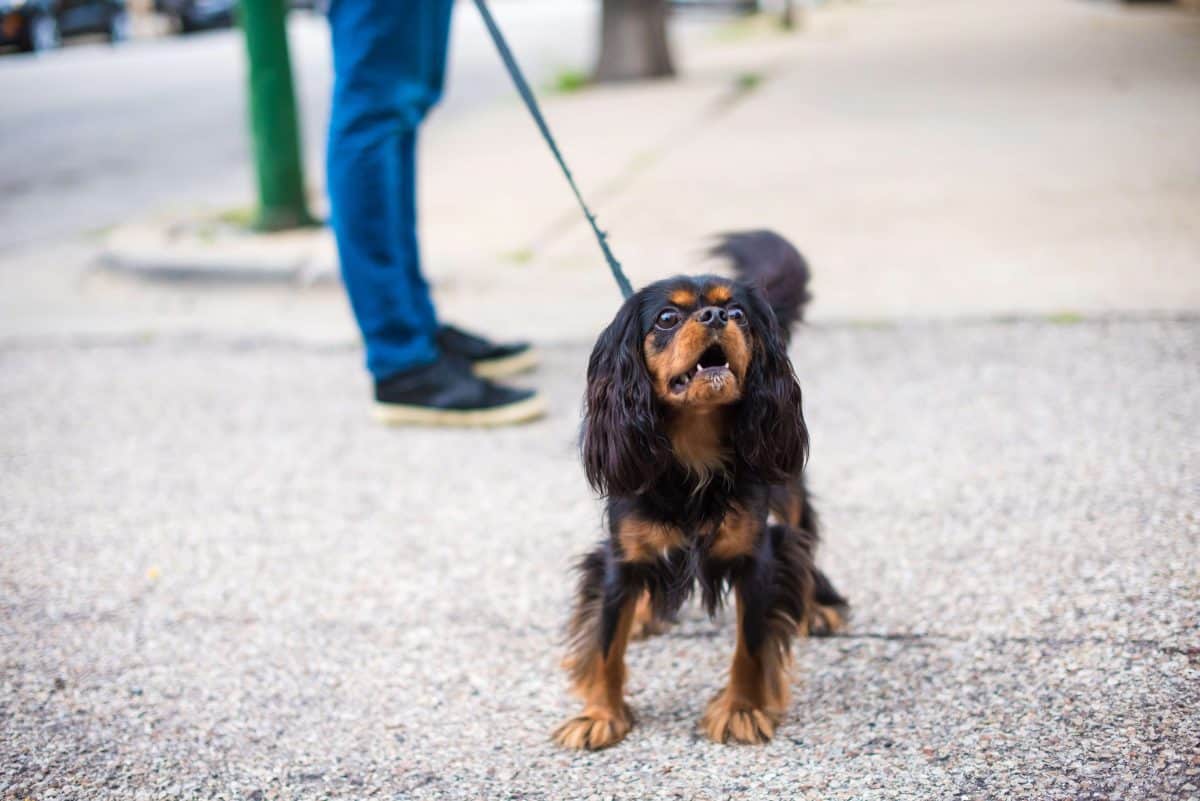Coping With Leash Reactivity

Does your dog walk beautifully with you until he sees another dog or strange person or cat or car or skateboard or . . . anything else that suddenly appears? Those things that prompt your dog to over react are collectively called ‘triggers’. Does your dog start barking, growling, lunging and otherwise acting like they’ve lost their mind when faced with one of these triggers? If the answer is yes then you are dealing with what we call Leash Reactivity.
There are exercises we can do to help this dog feel better and safer while out in the world so that he no longer feels a need to lose his mind when he sees such triggers.
The exercise I use the most is a protocol called Engage/Disengage. It works in two stages. The key is that when you are working with your dog you assess the environment and ensure that you have enough distance that your dog can see the trigger, but he does not feel compelled to react to it. He can just observe it. That distance is called his ‘threshold’. Further away from his threshold, the easier it is for him to see the triggers and not respond. If he’s quite close to that threshold distance, the trigger may hold his attention longer, but he still does not feel like he needs to react. If you are closer to the trigger than his threshold (even by just an inch), he will be compelled to react. He can’t help it, and he’s not doing it to upset or irritate you.
Engage/Disengage
Step 1: ENGAGE
Stay at a distance far enough away that your dog can see the trigger without reacting to it. Wait for him to look directly at the trigger. The moment he looks at the trigger, CLICK and present a treat to your dog’s nose. Lure his head to turn away from the trigger and back toward you before giving him the treat. Praise him for being a good boy.
Repeat this step until you see that your dog is anticipating and he turns to check in with you before you have a chance to click.
Step 2: DISENGAGE
This step starts when the dog has begun to anticipate the click and so is looking at you before you can CLICK that he sees a trigger.
At this point, you will allow him to look at the trigger for as long as he needs to and then when he looks away from the trigger you will CLICK and give a treat. By letting your dog look at the trigger, we give him a chance to take in information about that trigger such as movement and smell. When he has sufficient information he will disengage and look elsewhere. He may look at you (expecting that treat) or he may look at some other thing in the environment or he may begin sniffing the ground right in his personal space. All of those are good choices. So whatever he does when he disengages from the trigger is great, just be sure to CLICK when he disengages and then offer the treat.
As your dog gets comfortable with this part of the exercise, you can begin to move just a little close to the trigger. When you move closer, you may have to go back to step 1 (ENGAGE) again. This is normal and expected. Throughout, your dog should remain below his reaction threshold. If he ever starts to stiffen, growl, lunge, bark, etc. then you are too close. Get more distance and start again.
If you’re not sure how to start this exercise, enlist the aid of a positive reinforcement trainer committed to working cooperatively with your dog to set them up for success. Happy training leads to happy walks!
Author - Jody Epstein
Jody Epstein is a certified behavior consultant, certified professional dog trainer, and holds a master’s degree in animal behavior from Tufts University. She has been training professionally for more than 12 years and is pleased to be part of the Academy of Pet Careers team, teaching the next generation of trainers. Look out for her blogs on all things dog training and animal behavior.

